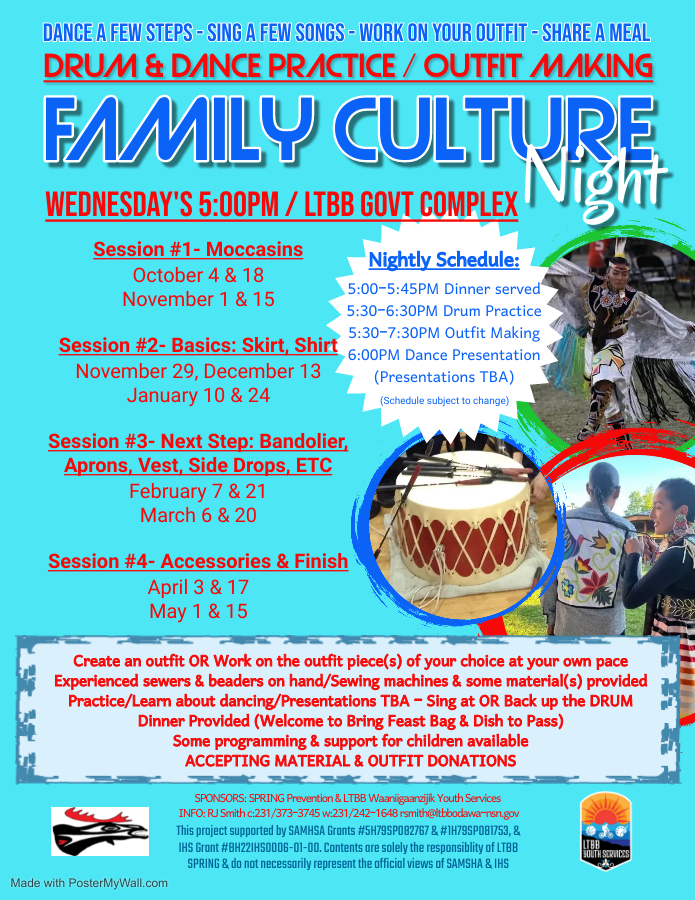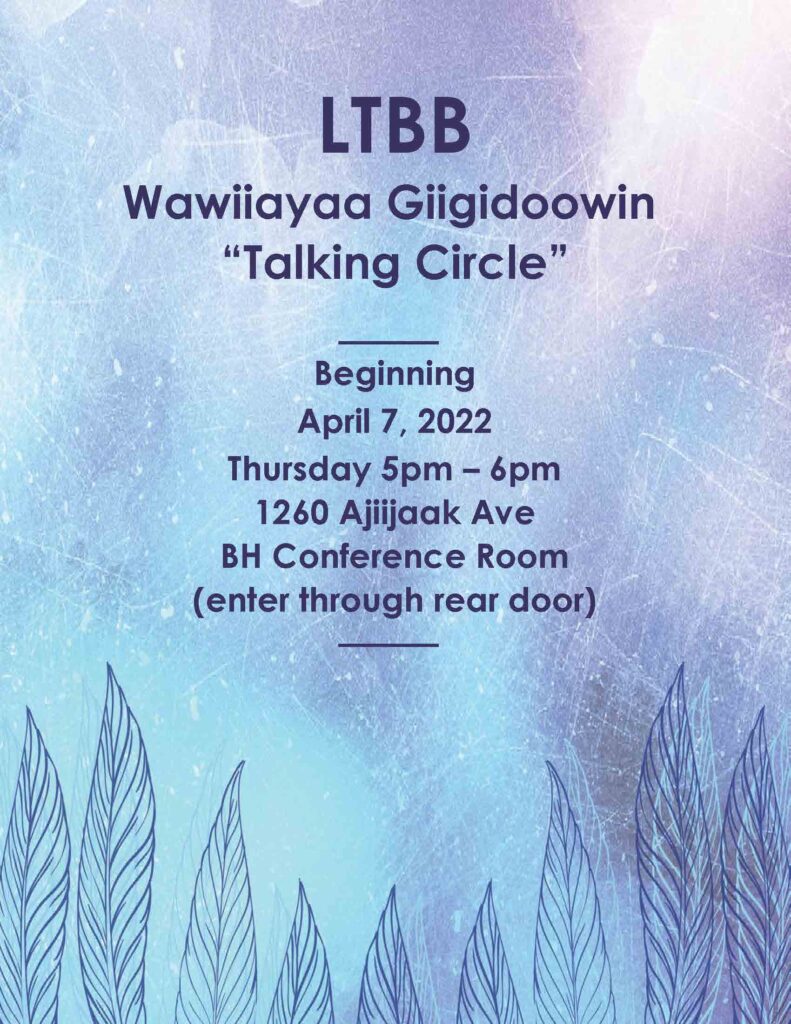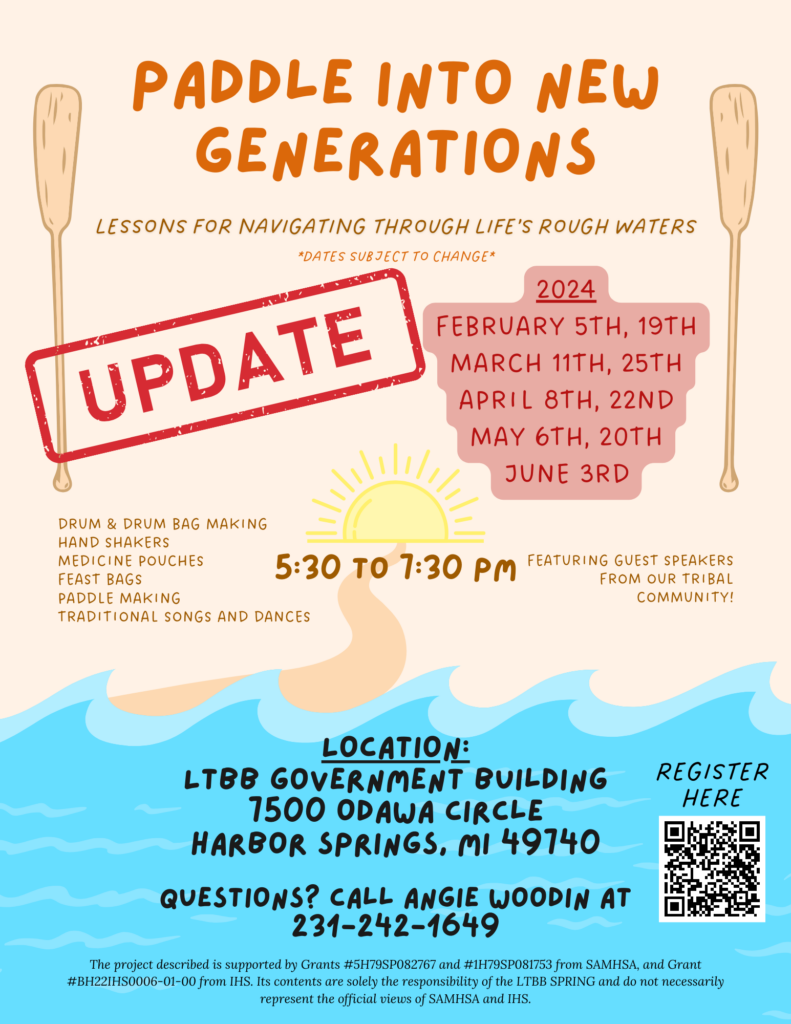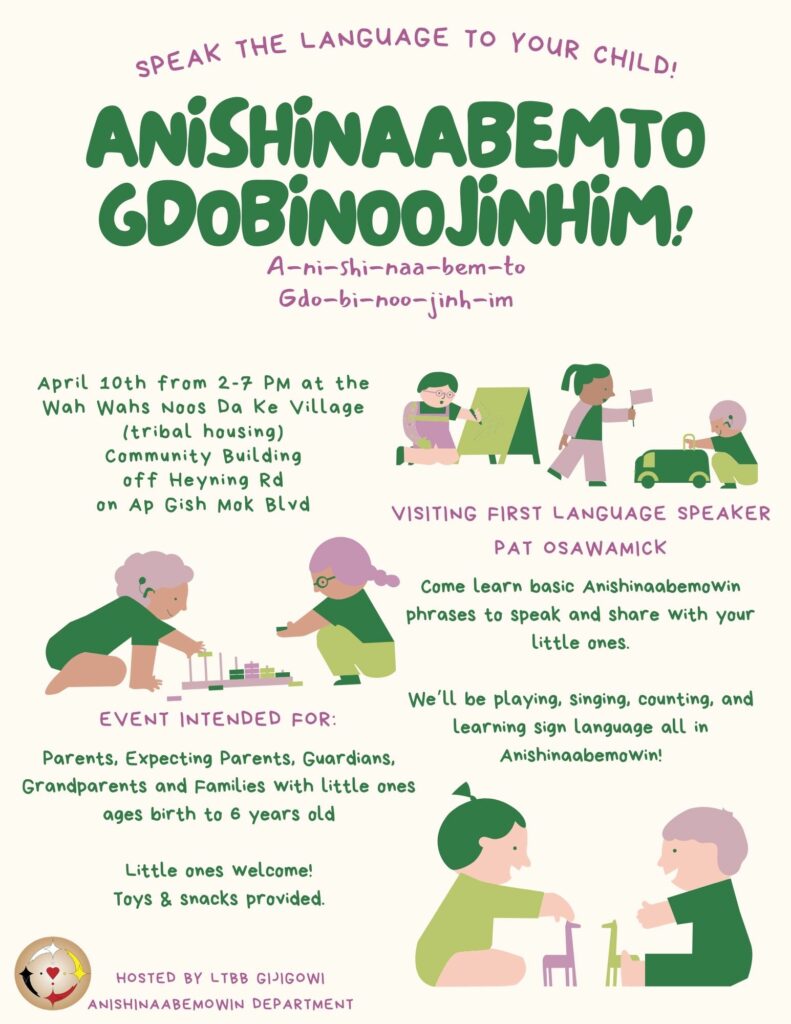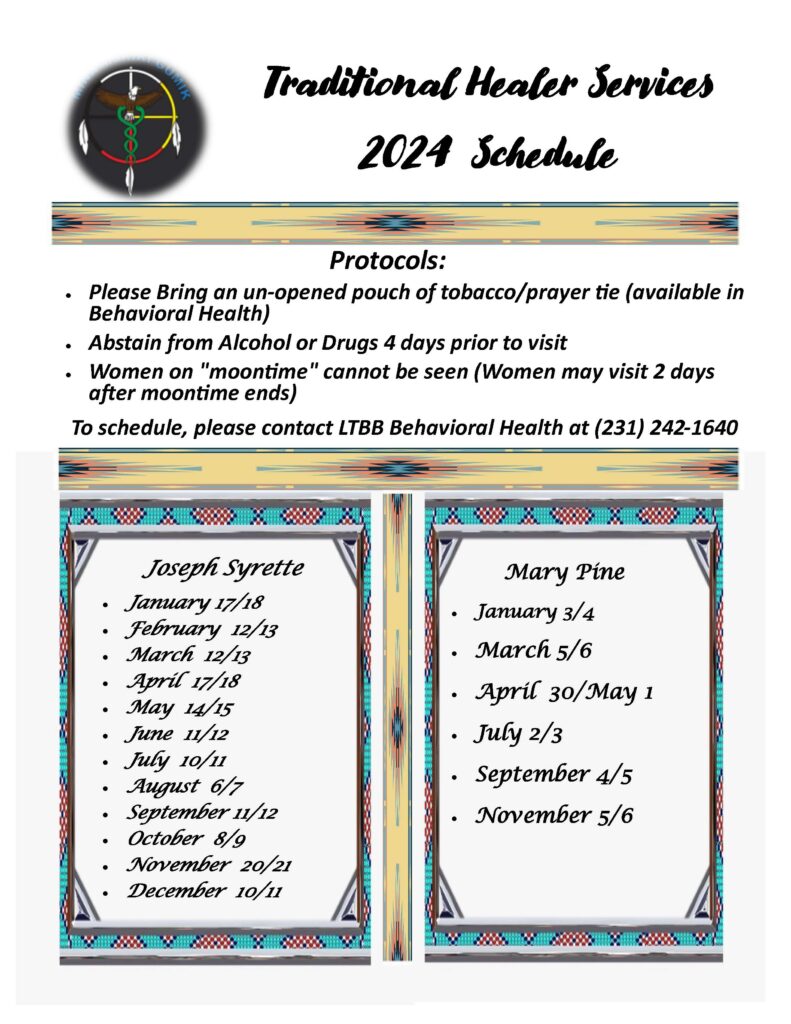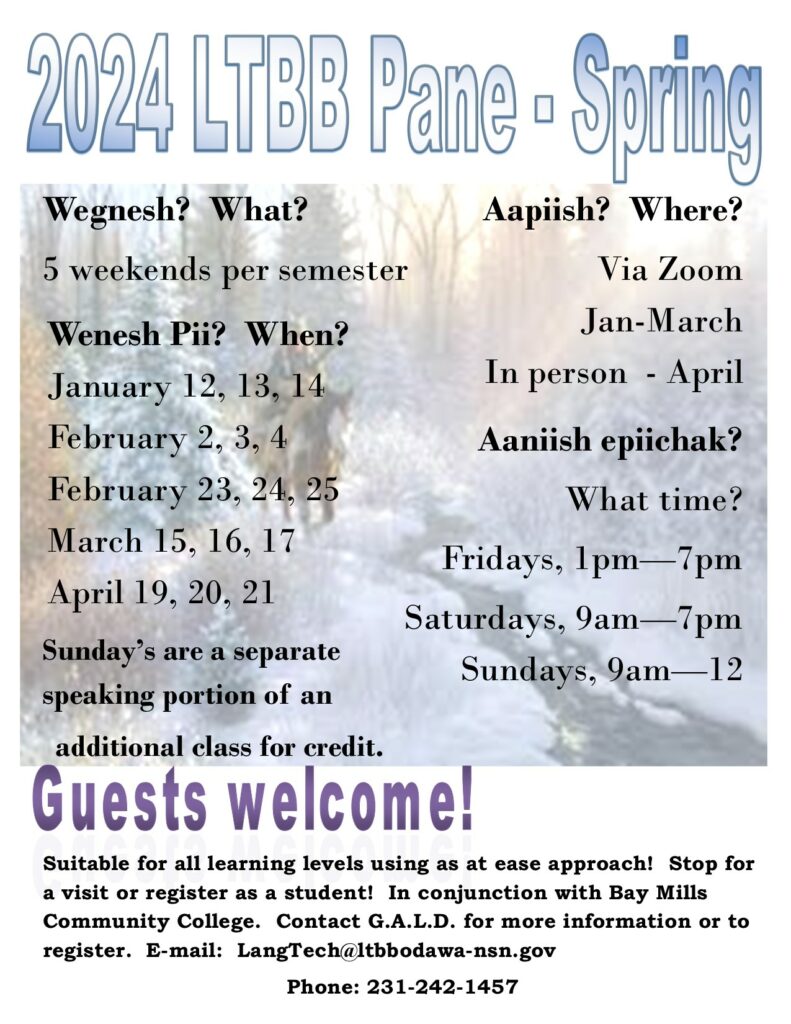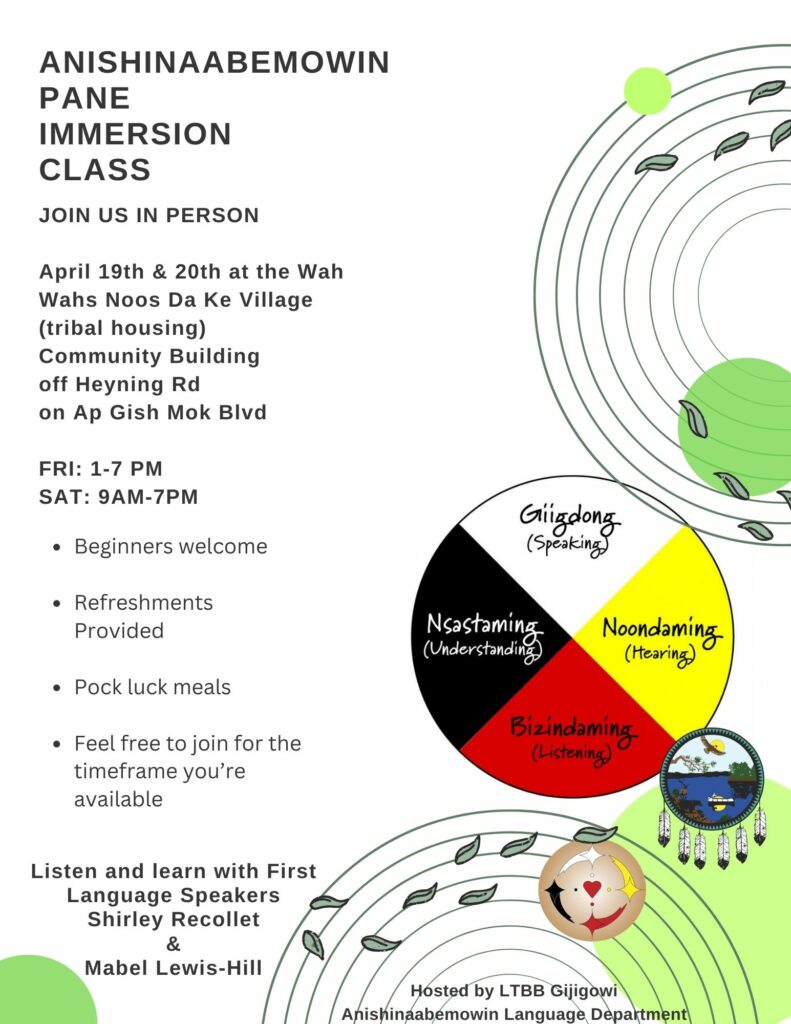Peacemaking Models and Examples
Compiled by LTBB Tribal Court
Mediation
Two common styles of conflict resolution are Evaluative Mediation and Facilitative Mediation. In both styles, a neutral mediator or co-mediators assist the involved parties in reaching a mutually agreeable resolution through dialogue.
Evaluative Mediationis a process not unlike settlement conferences held by judges. An evaluative mediator is expected to make recommendations as to the outcomes or issues. Attorneys may be participants along with their clients.
Facilitative Mediation sessions ordinarily exclude attorneys. Forms of Facilitative Mediation include Community Mediation (CM), Victim-Offender Mediation (VOM), and Victim Offender Reconciliation Program (VORP). In all three forms, parties have the opportunity give their versions of the dispute without interruption, participate in a discussion, and make an agreement about future conduct toward each other. Mediators withhold their personal opinions and concentrate on managing the process. CM tends to be settlement-driven, but with some potential to transform relationships. VOM is a dialogue-driven process emphasizing victim healing and offender accountability. In VOM, generally only the victim(s) and offender are present. Parents of juvenile offenders may be permitted to observe. Victims receive answers to questions, and are directly involved in developing a restitution plan. VORP is similar to VOM, focuses on healing and restoring right relationships, and employs biblical terminology.
Recently, VORP and VOM programs have experimented with including victim and offender supporters in mediation sessions. This hybrid is known as Victim Offender Conferencing (VOC).
The Oneida Tribe of Wisconsin has a tribal peacemaking program that resembles the mediation model.
The Oneida Tribe of Indians of Wisconsin developed a Peacemaking system with elements closely resembling facilitative mediation, and an emphasis on reaching a settlement, as opposed to healing and restoring harmony. During a hearing in Tribal Court, hearing officers have the discretion to recess to allow parties an opportunity to settle their dispute through the Peacemaking system. If the parties agree, the hearing officers could stay the case up to forty-five days. Also, the clerk will inform parties filing a petition that the Peacemaking system is available. If the parties resolve their dispute in Peacemaking, they must inform the court. The court may then dismiss the case in lieu of the peacemaking agreement.
Any person asked to be a Peacemaker should have mediation or facilitator training. If the person selected is not familiar with the Oneida laws and customs, that person may seek guidance from someone familiar with Oneida language, traditions and customs. Peacemaking sessions begin with an opening ceremony conducted by a Peacemaker or another person. Next, the steps of the session, confidentiality, and rules of behavior are explained. Then, the parties have the opportunity to speak about the dispute. They may call upon others in the community to contribute their understanding of the dispute, and the Peacemaker may call upon traditional leaders for guidance. After the problem is clarified, a solution is sought from the parties, family members and others present, such as service providers, social services, the chiefs, Faith Keepers and Clan Mothers. An agreement is written and signed by the parties, and the Peacemaker or traditional leader conducts a closing ceremony.
An agreement reached by the parties is binding and carries the same force and effect as any court order, decision or judgment. Their agreement cannot be appealed. If it is determined by the Peacemaker that the parties have reached an impasse, either party may file a complaint with the Oneida Appeals Commission and have the matter settled in trial court. The Peacemaking process consists of defining the problem, discussing solutions, and agreeing to a solution. An agreement is not announced to the community.
Conferencing
Sometimes called Family Group Conferencing, it is a process in which any group of individuals connected and affected by some past activity come together to discuss the issues that have arisen. Conferencing is similar to mediation in involving key parties, including offenders and victims, for resolving disputes in a non-professional setting. A facilitator sets the group focus, not unlike a mediator establishing ground rules.
Forms of conferencing vary in the involvement of the victim, victim supporters and offender supporters, including family members and significant others. They also vary in who facilitates, whether the whole group or a family caucus negotiates outcomes, and who approves the agreements. The meeting may occur before or after sentencing or as an alternative to going through the justice system.
Differentiating various conferencing forms is confusing. Likewise, the distinction between forms of mediation, conferencing, and circles continues to blur. Furthermore, program labels do not necessarily correspond to the models being used.
One of several conferencing forms is known as Community Justice Conferencing (CJC). CJC is guided by philosophies of restoration and community transformation. Other restorative justice models tend to focus on the social psychology of all parties affected by the incident. CJCs are convened as much for the sake of the families and friends, the communities of care of both victim and offender, as for the victim and offender. An
example of conferencing is Nishnawbe-Aski Legal Services Corporation’s Community Accountability Conferencing proram.
At Nishnawbe-Aski Legal Services, the Community Accountability Conferencing (CAC) program involves the bringing together of the offender and her supporters and the victim and his supporters in a circle to talk about what happened and see if a consensus can be arrived at about how harmony can be restored to the community. The offender is free to participate in the CAC, but her involvement is not mandatory and she is advised from the start that she is free to leave the circle at any time and have the matter referred to the Court System. The diversion to CAC can be pre- or post-charge. The heart of the conference is the interaction between the parties. The offender speaks first admitting what she did. This can be a challenge for the facilitator as the offender is often reluctant to open in front of other people. Then the victim is given the chance to speak. Usually it is very cathartic for the victim because this is the first time that he gets to say what happened and how he feels. Frequently the offender will apologize at this point in the conference, if not sooner. The next to speak are the victim’s supporters who further expand on the hurt the occurrence has caused. This may be the first time that the offender has ever given any thought about how her actions have affected others. Finally, the offender’s supporters speak and they are frequently as troubled as the victim. The theory, and it works, is the offender will feel shame but that it is of a re-integrative nature. That is to say, the goal of the conference is not to decide whether the offender is a good or bad person but to decide what can be done to right the wrong.
The next step in the conference is to ask the group for suggestions about how the matter can be resolved. Once a consensus has been arrived the facilitator leaves the room to draft up a contract to be signed by the parties. Often the facilitator will be the one to do the follow-up to see that the agreement is followed and thus takes the place of the probation officer.
Circles
Circle processes for handling wrongdoing originated with traditional aboriginal concepts of freedom and individuality—one person cannot impose a decision upon another. Circle models have evolved along two general paths: a healing paradigm (Healing Circles) to dispose of situations, and a co-judging paradigm (Sentencing Circles) for developing recommendations for actual case disposition.
There are many circle processes, differing on the purpose of the circle, who participates and the role of the participants. Healing and talking circles focus on a particular concern common to all parties (men or women’s healing circles, substance abuse groups) or are constituted to help someone with their healing journey (support groups for victims or for offenders). Such circles rarely involve justice professionals but may include professional counselors.
Examples of the circle process are Navajo Justice, Yukon’s Sentencing Circles, Circle Peacemaking of Kake, Alaska, Healing Circles developed in Hollow Water, Manitoba, and the former Justice Program of Garden River, Ontario.
Navajo custom involves the idea of Hozhooji (living in “right relationship”). If a person believes they’ve been wronged by another they first make a demand for the perpetrator to put things right—a demand for compensation. It is also a demand to readjust the relationship so that the proper thing is done. If unsuccessful, the wronged person may turn to a respected community leader to facilitate and organize a peacemaking process. The Navajo Justice (NJ) process involves family and clan members of victims and perpetrators talking through matters to arrive at a solution. The community leader performs the role of peacemaker, using traditional teachings to clarify false values and correct untrue assumptions about behavior. The process opens with a prayer to seek spiritual assistance. Parties then have an opportunity to lay out their grievances. The victim has the opportunity to disclose not only the facts, but their impact. People have an opportunity to say how they feel about the event and make a demand that something be done about it. The person who is the focus of the discussion is provided an opportunity to explain his or her behavior in full. Denial and excuses are exposed by the people who know the wrongdoer best—his spouse, parents, siblings, other relatives and neighbors. The peacemaker will then give reality therapy and do values clarification in a talk to the parties designed to guide them. The parties return to discussion of the nature of the problem and what needs to be done to resolve it. Often, the action taken is in the form of restitution or reparation. Payments can be in the form of money, horses, jewelry, or other goods. The payment can be symbolic only. The focus is not on adequate compensation, but upon a holistic kind of remedy. The feelings and relationships of the parties are what is most important. The NJ process ends in an action plan to solve the problem.
Traditional behavioral norms among various Yukon tribes were that “a person should maintain peaceful and mild relations with other individuals no matter what his true feelings may be.” Elaborate “peace-making ceremonies” were used to work through disputes, especially those involving loss of life. A community-based Sentencing Circle (SC) process in the Yukon arose in response to the recognition that change was needed in the way policing and justice was carried out in Aboriginal communities. A SC is a community directed process, in partnership with the criminal justice system, for developing consensus on a sentencing plan which addresses the concerns of all interested parties. SCs use traditional circleritual and structure to create a respectful space in which all interested community members, victim, victim supporters, offender, offender supporters, judge, prosecutor, defense counsel, police and court workers can speak from the heart in a shared search for understanding of the event and to identify the steps necessary to assist in healing all affected parties and prevent future occurrences. Pre-requisites for offenders include an acceptance of responsibility, a plea of guilty, a connection to the community, a desire for rehabilitation, concrete steps toward rehabilitation, support within the community for the offender, and the input of the victim. Acceptance into the circle is decided by a community justice committee or circle support group. Communities select one or two local people to act as keepers of the circle who act as facilitators.
Circles open with prayer and introductions by the keepers of the circle. The sacred eagle feather travels around the circle four times during a SC session. The SC process is inclusive. Everyone in the community has a stake in the outcome, and thereby a reason to participate. Everyone may not participate, but it is important for everyone to know they can and are encouraged to do so.
During the first round many express concern for victims, offenders, and their families, and speak of their hope for the circle to find a way to heal all who share in the circle. Introductions help set the tone for the circle and begin to identify the pain, anger and hope of different participants. Keepers discuss the teachings of the circle and explain the guidelines extracted from the teachings. Most guidelines—such as speaking from the heart, remaining until the end in the circle, allowing others to speak by speaking briefly, respecting others by not interrupting and by recognizing the value of their contribution—are common to most communities. The second circle is people speaking to the victim, absolving the victim of guilt and shame. They praise her or him for the courage for bringing this out, saying that what happened to them was not their fault. The third circle is to speak to theoffender because the crime that offender has committed has not only touched the victim, it has also touched the family and the kinship system. People speak directly to the offender, saying how it’s made them feel and what their expectations are for that person. The fourth circle is to give recommendations to the judge saying what should happen to this person. The closing rituals include summarizing what has or has not been agreed, outlining next steps, thanking everyone for their participation, passing the feather for closing comments by all the participants, and a closing prayer.
A second example of SC is Circle Peacemaking at the Organized Village of Kake, Alaska. Adult Kake community members had memories of sitting in a circle to resolve individual and family problems. In 1998, a local group of concerned citizens formed to try to deal with drug, alcohol, and suicide problems of young people. They adopted a modified version of the SC model in which clan representatives were allowed to call on speakers for each side of a conflict. In the beginning, it was used as a form of diversion from prosecution for misdemeanor activity by youth, and parental alcohol abuse. Now, the village is considering designating the Circle Peacemaking group as their Tribal Court, with Tribal Council as the Court of Appeals and a Court of Elders as a Supreme Court. Already, the program has expanded to include healing circles for victims, intervention circles for individuals who seem to be losing control of their lives, celebration circles for offenders who have completed their sentencing requirements, and critical incident circles for individuals involved in an accident or crime and require immediate counseling.
Referrals come from the state court, the police, and village social services. In state court, a guilty plea and the concurrence of the judge, prosecutor and public defender is required. Victim participation is essential. The circle is open to anyone, Native and non-Native, since we all make up our community. A Circle Keeper facilitates the process. In the circle, each person talks in turn. The discussion goes around until the group as a whole reaches consensus about what the plan should be. Then the offender must agree to the plan and to completing it within a certain time. The process is more important than the ultimate result, because the process includes apologies and accepting those apologies, as well as the work of change. Peace, balance and respect are established between the victim, perpetrator and the community. The circle consensus agreement is made public at a community or family get-together. Circle Peacemaking does not conclude with sentencing. The circle participants are themselves responsible for ensuring that offenders adhere to their sentences. It is not uncommon for the participants to call for additional circles when they are concerned about noncompliance.
The Justice Program previously operated by the Garden River (Ojibway) First Nation, as with the Kake program, was based on the Yukon model. Circles were convened in the Healing Lodge on the reserve. Dan Pine, Sr., had a vision of the Healing Lodge where people would find the way back to harmony and balance. Construction of the Lodge was made possible by donations and volunteer labor. There are numerous uses for the Lodge throughout the year. Natives and non-Natives receive teachings on Anishinaabe traditions. A healing program for survivors of Canadian boarding schools utilizes the Lodge. In addition, adults and juveniles, individually and collectively, use it in their physical, emotional, and spiritual healing journeys. On Sundays, community members gather in the Lodge for singing, socializing, and brunch. Prayer circles, memorial gatherings, and a variety of ceremonies are held there. Men, women, and young people use it for their fasts. A peacemaking workshop was held at the Lodge a few years ago.
The Justice Program was funded by the Canadian federal government. Cooperation from the Provincial Court and Crown Attorney (prosecutor) wasessential. After being charged by the police, an accused member of Garden River First Nation was given the option of applying to the Crown Attorney for diversion to the Justice Program, and accepting full responsibility for his actions. Types of offenses were restricted to theft, possession, disturbances, fraud, and similar crimes. However, the Crown Attorney also considered other factors that restricted the number of referrals. Charges were stayed or withdrawn from Provincial Court if the accused entered the Justice Program.
Garden River established a Community Council to meet with offenders. Community Council members included Elders, social workers, spiritual leaders, police officers (out of uniform), and others. Program Coordinator Terry Nolan would interview those referred by the Crown Attorney prior to scheduling the circle. Circles were convened around the Sacred Fire in the Lodge. An Eagle Feather was passed in the circle. The accused and everyone in the circle had opportunities to talk about the crime, the harm done, expectations for future behavior, and making amends. Community service was a customary outcome of the process, as well as a commitment to counseling and treatment. Healing circles at the Lodge were available while the accused completed his community service, and after. Non-compliance could lead to a follow-up circle with the Community Council.
In time, the number of referrals to the program decreased, and funding was terminated. From the Band’s perspective, termination was caused by a decrease in referrals due to program’s success at reducing recidivism. The program offered to accept referrals of offenders from other First Nations living in the district, but the Crown Attorney was unwilling.
Healing Circles (HC) is a third type of circle process. The Anishnaabe community of Hollow Water initiated its Community Holistic Circle Healing program in response to generations of incest and sexual assault, and the need to heal not only the intimate connections and human dignity that was destroyed, but also to address the social arrangements that enabled this violence to flourish. The complete process as developed in Hollow Water involves thirteen phases:
1. Disclosure
2. Establish safety for the victim
3. Confront the victimizer
4. Support the spouse/parent/child
5. Support the family(s)/community
6. Meeting of assessment team with police
7. Circles with victimizer (one or two hours at least two times a week)
8. Circles with victim separately (one or two hours at least two times a week)
9. Circles with victimizer’s family (gradually brings in family, until all join)
10. Circles with the victim’s family (gradually brings in family, until all join)
11. Sentencing circle with all present to recommend disposition (with judge)
12. Sentencing review circle with community (w/o judge every six months for 5 years)
13. Cleansing circle
Following disclosure, the assessment team arranges for the safety of the victim and confronts the offender. Offenders are encouraged to admit responsibility and seek support in changing their behavior. The offenders are assigned case workers and must begin weekly sessions with counselors. They are then brought into an “offender circle” with the team, which may be joined by recovered offenders. This circle continues until the offender can disclose all the details. Another circle for an offender is one that works with the nuclear family. They have to bring their partners and their children to a healing circle. It’s their responsibility to tell the family what they’ve done. Those circles are also ongoing. In one more circle they have to start working with their family of origin—mother and father, sisters and brothers. Again, they have to tell what they’ve done. Simultaneously, the assessment team begins healing circles with the victim (“victim circles”), and gradually brings in the victim’s family. Finally the offender circle and victim circle come together. In this third circle, the offender does not speak. While the offender sits in silence, the victim speaks to the offender, saying “this is what you did to me, and this is how it affected me.” The fourth circle is the “sentencing circle.” Here offenders must tell the whole community what they were charged with and what they’ve done so far. The community will make its recommendation and the judge passes sentence. Six months following sentencing, the offender is called to a fifth circle, this time without the court party—just the community is present. “Community circles” provide the whole community a chance to get a report on the offender’s and victim’s progress. The sentence is reviewed and a report on the healing work in the past six months is given. The offender is required to answer back to their community because his community had spoken on his behalf. The sixth circle is called a “bonding circle,” where both victim and victimizer meet once a week. This often lasts all day. The seventh circle, called a “cleansing circle,” is where the victim and the victimizer and both families get together. The victim and the victimizer usually pull this circle together because of the work they have done on all the other circles, so everyone can see how much both have dealt with their pain together. The cleansing circle is a community celebration of their growth and beginning of their new journey of peace.
Councils
Historically, according to the literature and oral traditions, councils of tribal leaders decided certain major issues within and among the Great Lakes tribes. Because a consensus was required, the council decision-making process could take days or weeks. Relatively serious transgressions, and disputes that were not resolved within family or village groups had the potential to reach the councils. The Traditional Court of the Ho-Chunk Nation is one of the few contemporary examples of the council approach to justice and dispute resolution. In addition, Muskrat Dam First Nation maintains aspects of its traditional justice practices, including a Council of Elders.
The Ho-Chunk Nation has a “dual justice system” with both a trial court and Traditional Court. Traditional Court consists of eleven elders representing the traditional societies/clans, and the Native American Church. The Traditional Chief (not the elected Tribal president) also sits on the Court. All are speakers of the traditional Ho-Chunk language. Court sessions are held almost exclusively in the traditional language. Important qualities for the members of the Traditional Court are understandings of the social system, values, code of ethics, belief system, ceremonies, and oral history. By following procedural guidelines, tribal members may seek either informal advice or the formal disposition of a claim. Laws applied in the Traditional Court are the unwritten customs and traditions passed down through time. All parties to a suit must consent to bring action before the Traditional Court. Parties are expected to speak in the traditional language, but may request an elder male to assist them if not fluent themselves. The process involves teachings and counseling of the parties, but not scolding or imposing sanctions. It may involve “discovery,” which evidently means “seeing” or “knowledge from the Spirits.” The decision of the Court is final and not appealable. However, it is only binding on those who appear before the Traditional Court. Only Indians use the Traditional Court—non-Natives use the trial court. Referrals and orders come from the Tribe’s trial court, government agencies, county courts, and self-referral sources. In addition, the legislative branch occasionally seeks advice from the Court. It has provided advice on NAGPRA issues. Members will recuse themselves when a close relative comes to the court. Follow-up is handled by tribal human services or other agencies. In some cases, the individuals or families return to the Traditional Court three to four times for “talks,” while the agencies are at the same time following up with them.
Many youth do not know tribal history and customs, and some ask the Traditional Court for teachings. Members see themselves as mentors to the youth they come into contact with. Members usually attend events where tribal children are present, even if they are not asked to speak/teach. Indians from various tribes are patients at the local V.A. hospital, and members visit them and assist with recovery programs. Further, at least one member provides counseling to Native prison inmates.
The courtroom is quite impressive, rounded at one end of the room, with cedar boards on the walls and ceiling, and a large central hearth. Chairs for the Elders are backed against the rounded walls. Completing the circle are tables for the
parties that come before the Court. Benches are provided for members of the general public, but family cases are closed and confidential.
Muskrat Dam First Nation is an Anishinaabe community in a remote area of Ontario. In 1929, together with their neighbors, Muskrat Dam leaders signed the last major treaty with the governments of Canada and Ontario. As recently as the 1970s, the community had a complete and effective traditional system to deal with justice, welfare and other needs, with almost no interference from the provincial and federal governments. The communal ethic of this First Nation charged every community member with responsibility to look out for the welfare of their neighbor. If they were unable to help, they were expected to notify the leadership consisting of Chief, Council of Elders, local church leaders (who often were the Chief and members of the Council of Elders) and persons who were respected as peacemakers. Even today, key elements of their justice traditions survive, most notably peacemakers who patrol the community, and the Council of Elders.
The following describes a situation in which the Council of Elders was involved in mid-1990s: The woman was accusing her husband of beating her up all the time and making her life miserable. Now I don’t know, some were saying that it was the other way around. But an elder came up to me and said that you have to deal with this because it’s a part of the job of Chief and Council to deal with it. So I went to my elders and I said how do we go about doing this. And they said “Well, simple, just bring them in, …and we’ll talk to them.” And I said “Oh, it’s that simple eh?” But it’s amazing what can happen. So I said “Sure, OK let the Council of Elders meet here at a certain time and I’ll get the two in.” So, the Council of Elders met and they sat around a table like this and the two came in and they sat at one side of the table. And then one of the elders said “We are doing it wrong…We’re supposed to be in a circle and these two are supposed to be inside the circle. But I knew that that young man was really shaking eh, and I said “No, that maybe we’ll do it this way one time only.” And then it started. I sort of made my opening statement sort of talking about what was reported to me that the young man was mistreating his wife and that was not allowed in our society that you were not allowed to mistreat anybody. And then it went around through the whole group of elders. The elders were being very strict, very forceful, but they were teaching them how they could function together as a team and then at the end a couple of the elders had a couple of gifts with them that they gave to the couple. And they are still together. We’ve never had any problems with them.



